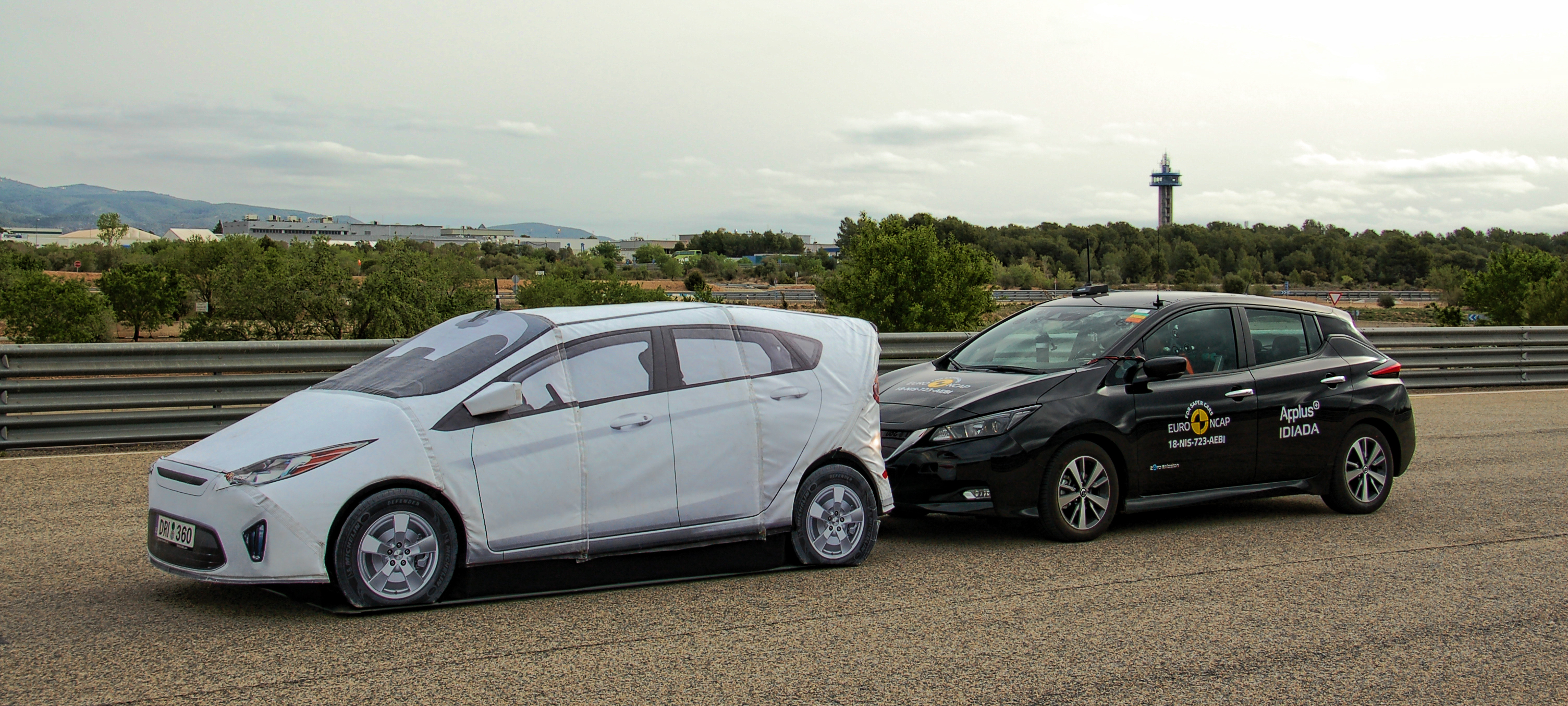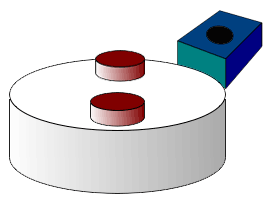|
Electronic Throttle
Electronic throttle control (ETC) is an automobile technology which Electronics, electronically "connects" the accelerator pedal to the throttle, replacing a mechanical linkage. A typical ETC system consists of three major components: (i) an accelerator pedal module (ideally with two or more independent sensors), (ii) a throttle valve that can be opened and closed by an electric motor (sometimes referred to as an electric or electronic throttle body (ETB)), and (iii) a powertrain or engine control module (PCM or ECM). The ECM is a type of electronic control unit (ECU), which is an embedded system that employs software to determine the required throttle position by calculations from data measured by other sensors, including the accelerator pedal position sensors, engine speed sensor, vehicle speed sensor, and cruise control switches. The electric motor is then used to open the throttle valve to the desired angle via a Feedback, closed-loop control algorithm within the ECM. The b ... [...More Info...] [...Related Items...] OR: [Wikipedia] [Google] [Baidu] |
Precrash System
A collision avoidance system (CAS), also known as a pre-crash system, forward collision warning system, or collision mitigation system, is an advanced driver-assistance system designed to prevent or reduce the severity of a collision. In its basic form, a forward collision warning system monitors a vehicle's speed, the speed of the vehicle in front of it, and the distance between the vehicles, so that it can provide a warning to the driver if the vehicles get too close, potentially helping to avoid a crash. Various technologies and sensors that are used include radar (all-weather) and sometimes laser (LIDAR) and cameras (employing image recognition) to detect an imminent crash. GPS sensors can detect fixed dangers such as approaching stop signs through a location database. Pedestrian detection can also be a feature of these types of systems. Collision avoidance systems range from widespread systems mandatory in some countries, such as autonomous emergency braking (AEB) in t ... [...More Info...] [...Related Items...] OR: [Wikipedia] [Google] [Baidu] |
NASA
The National Aeronautics and Space Administration (NASA ) is an independent agencies of the United States government, independent agency of the US federal government responsible for the civil List of government space agencies, space program, aeronautics research, and outer space, space research. NASA was National Aeronautics and Space Act, established in 1958, succeeding the National Advisory Committee for Aeronautics (NACA), to give the U.S. space development effort a distinctly civilian orientation, emphasizing peaceful applications in space science. NASA has since led most American space exploration, including Project Mercury, Project Gemini, the 1968-1972 Apollo program, Apollo Moon landing missions, the Skylab space station, and the Space Shuttle. NASA supports the International Space Station and oversees the development of the Orion (spacecraft), Orion spacecraft and the Space Launch System for the crewed lunar Artemis program, Commercial Crew Program, Commercial Crew ... [...More Info...] [...Related Items...] OR: [Wikipedia] [Google] [Baidu] |
National Highway Traffic Safety Administration
The National Highway Traffic Safety Administration (NHTSA ) is an agency of the U.S. federal government, part of the Department of Transportation. It describes its mission as "Save lives, prevent injuries, reduce vehicle-related crashes" related to transportation safety in the United States. NHTSA is charged with writing and enforcing Federal Motor Vehicle Safety Standards as well as regulations for motor vehicle theft resistance and fuel economy, as part of the Corporate Average Fuel Economy (CAFE) system. FMVSS 209 was the first standard to become effective on March 1, 1967. NHTSA cannot licenses vehicle manufacturers and importers, allows or blocks the import of vehicles and safety-regulated vehicle parts, administers the vehicle identification number (VIN) system, develops the anthropomorphic dummies used in U.S. safety testing as well as the test protocols themselves, and provides vehicle insurance cost information. The agency has asserted preemptive regulatory a ... [...More Info...] [...Related Items...] OR: [Wikipedia] [Google] [Baidu] |
Unintended Acceleration
Sudden unintended acceleration (SUA) is the unintended, unexpected, uncontrolled acceleration of a vehicle, often accompanied by an apparent loss of braking effectiveness. Such problems may be caused by driver error (e.g., pedal misapplication), mechanical or electrical problems, or some combination of these factors. The US NHTSA estimates 16,000 accidents per year in the United States occur when drivers intend to apply the brake but mistakenly apply the accelerator. Definition and background In the 1980s, the U.S. National Highway Traffic Safety Administration (NHTSA) reported a narrow definition of sudden acceleration only from near standstill in their 1989 ''Sudden Acceleration Report'': "Sudden acceleration incidents" (SAI) are defined for the purpose of this report as unintended, unexpected, high-power accelerations from a stationary position or a very low initial speed accompanied by an apparent loss of braking effectiveness. In a typical scenario, the incident begins at th ... [...More Info...] [...Related Items...] OR: [Wikipedia] [Google] [Baidu] |
Hall Effect Sensor
A Hall effect sensor (or simply Hall sensor) is a type of sensor which detects the presence and magnitude of a magnetic field using the Hall effect. The output voltage of a Hall sensor is directly proportional to the strength of the field. It is named for the American physicist Edwin Hall. Hall sensors are used for proximity sensing, positioning, speed detection, and current sensing applications. Frequently, a Hall sensor is combined with threshold detection to act as a binary switch. Commonly seen in industrial applications such as the pictured pneumatic cylinder, they are also used in consumer equipment; for example, some computer printers use them to detect missing paper and open covers. Some 3D printers use them to measure filament thickness. Hall sensors are commonly used to time the speed of wheels and shafts, such as for internal combustion engine ignition timing, tachometers and anti-lock braking systems. They are used in brushless DC electric motors to det ... [...More Info...] [...Related Items...] OR: [Wikipedia] [Google] [Baidu] |
Potentiometer
A potentiometer is a three-terminal resistor with a sliding or rotating contact that forms an adjustable voltage divider. If only two terminals are used, one end and the wiper, it acts as a variable resistor or rheostat. The measuring instrument called a potentiometer is essentially a voltage divider used for measuring electric potential (voltage); the component is an implementation of the same principle, hence its name. Potentiometers are commonly used to control electrical devices such as volume controls on audio equipment. Potentiometers operated by a mechanism can be used as position transducers, for example, in a joystick. Potentiometers are rarely used to directly control significant power (more than a watt), since the power dissipated in the potentiometer would be comparable to the power in the controlled load. Nomenclature There are a number of terms in the electronics industry used to describe certain types of potentiometers: * slide pot or slider pot: a potentiom ... [...More Info...] [...Related Items...] OR: [Wikipedia] [Google] [Baidu] |
PID Control
A proportional–integral–derivative controller (PID controller or three-term controller) is a control loop mechanism employing feedback that is widely used in industrial control systems and a variety of other applications requiring continuously modulated control. A PID controller continuously calculates an ''error value'' e(t) as the difference between a desired setpoint (SP) and a measured process variable (PV) and applies a correction based on proportional, integral, and derivative terms (denoted ''P'', ''I'', and ''D'' respectively), hence the name. In practical terms, PID automatically applies an accurate and responsive correction to a control function. An everyday example is the cruise control on a car, where ascending a hill would lower speed if constant engine power were applied. The controller's PID algorithm restores the measured speed to the desired speed with minimal delay and overshoot by increasing the power output of the engine in a controlled manner. The firs ... [...More Info...] [...Related Items...] OR: [Wikipedia] [Google] [Baidu] |
Gasoline Direct Injection
Gasoline direct injection (GDI), also known as petrol direct injection (PDI), is a mixture formation system for internal combustion engines that run on gasoline (petrol), where fuel is injected into the combustion chamber. This is distinct from manifold fuel injection systems, which inject fuel into the intake manifold. The use of GDI can help increase engine efficiency and specific power output as well as reduce exhaust emissions. The first GDI engine to reach production was introduced in 1925 for a low-compression truck engine. Several German cars used a Bosch mechanical GDI system in the 1950s, however usage of the technology remained rare until an electronic GDI system was introduced in 1996 by Mitsubishi for mass-produced cars. GDI has seen rapid adoption by the automotive industry in recent years, increasing in the United States from 2.3% of production for model year 2008 vehicles to approximately 50% for model year 2016. Operating principle Charge modes The 'char ... [...More Info...] [...Related Items...] OR: [Wikipedia] [Google] [Baidu] |
Stability Control
Electronic stability control (ESC), also referred to as electronic stability program (ESP) or dynamic stability control (DSC), is a computerized technology that improves a vehicle's stability by detecting and reducing loss of traction ( skidding). When ESC detects loss of steering control, it automatically applies the brakes to help steer the vehicle where the driver intends to go. Braking is automatically applied to wheels individually, such as the outer front wheel to counter oversteer, or the inner rear wheel to counter understeer. Some ESC systems also reduce engine power until control is regained. ESC does not improve a vehicle's cornering performance; instead, it helps reduce the chance of the driver losing control of the vehicle. According to the U.S. National Highway Traffic Safety Administration and the Insurance Institute for Highway Safety in 2004 and 2006 respectively, one-third of fatal accidents could be prevented by the use of the technology. In Europe the elec ... [...More Info...] [...Related Items...] OR: [Wikipedia] [Google] [Baidu] |
Automobile
A car or automobile is a motor vehicle with wheels. Most definitions of ''cars'' say that they run primarily on roads, seat one to eight people, have four wheels, and mainly transport people instead of goods. The year 1886 is regarded as the birth year of the car, when German inventor Carl Benz patented his Benz Patent-Motorwagen. Cars became widely available during the 20th century. One of the first cars affordable by the masses was the 1908 Model T, an American car manufactured by the Ford Motor Company. Cars were rapidly adopted in the US, where they replaced animal-drawn carriages and carts. In Europe and other parts of the world, demand for automobiles did not increase until after World War II. The car is considered an essential part of the developed economy. Cars have controls for driving, parking, passenger comfort, and a variety of lights. Over the decades, additional features and controls have been added to vehicles, making them progressively more com ... [...More Info...] [...Related Items...] OR: [Wikipedia] [Google] [Baidu] |
Traction Control System
A traction control system (TCS), also known as ASR (from german: Antriebsschlupfregelung, lit=drive slippage regulation), is typically (but not necessarily) a secondary function of the electronic stability control (ESC) on production motor vehicles, designed to prevent loss of traction (i.e., wheelspin) of the driven road wheels. TCS is activated when throttle input and engine power and torque transfer are mismatched to the road surface conditions. The intervention consists of one or more of the following: *Brake force applied to one or more wheels *Reduction or suppression of spark sequence to one or more cylinders *Reduction of fuel supply to one or more cylinders *Closing the throttle, if the vehicle is fitted with drive by wire throttle *In turbocharged vehicles, a boost control solenoid is actuated to reduce boost and therefore engine power. Typically, traction control systems share the electrohydraulic brake actuator (which does not use the conventional master cylinder ... [...More Info...] [...Related Items...] OR: [Wikipedia] [Google] [Baidu] |



